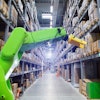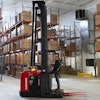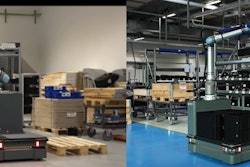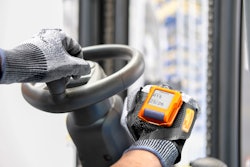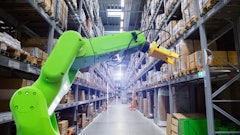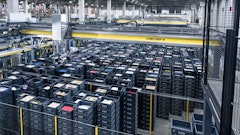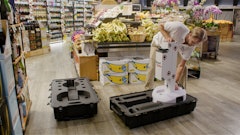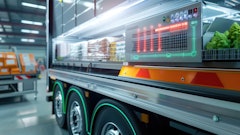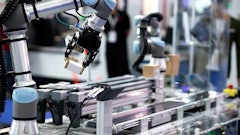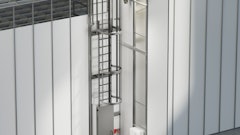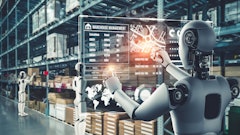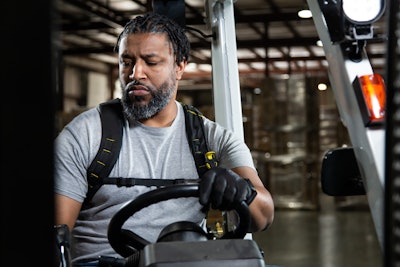
- Advancements in automation and a relentless drive for increased output are taking a toll on workers and putting their safety at risk. Employees in logistics, manufacturing, food and beverage, and retail industries are facing increased risk as they balance the pressures for heightened output demands with preserving their physical health.
Overexertion may cause workers to suffer a number of musculoskeletal system diseases and disorders that impact their quality of life and in some cases, their ability to continue working. The injuries also take a toll on companies, as more than 264 million workdays are lost each year because of back pain. Musculoskeletal injury caused by repeated movements can heavily impact worker productivity, morale, and company profits. As companies seek ways to protect workers and improve operational efficiency, wearable technology—specifically exosuits—is emerging as an innovative solution to mitigate these risks while actually improving both worker productivity and their quality of life.
The impact of injuries on productivity
Musculoskeletal disorders (MSDs) are among the most common workplace injuries in the logistics and warehousing sectors, so the financial impact of injury on companies also plays a large factor. According to Liberty Mutual’s 2024 Workplace Safety Index, employers in 2021 spent over $1 billion a month on direct costs of worker injuries due to overexertion involving outside sources. As a result, injuries from overexertion cost U.S. businesses $12.49 billion.
These injuries don’t just come from moving heavy items. While heavier items can impact strain levels, much of the strain comes simply from supporting the worker's own upper body weight through many high-frequency bend and lift cycles. Especially within the food logistics industry, repetitive bending and lifting motions are performed thousands of times a day for order pickers. Employers who adopt safety and health programs can expect reduced workplace injuries and associated costs such as workers' compensation, medical bills, and productivity losses.
Reducing injuries with exosuits
Many companies in the logistics and warehousing sectors are turning to wearable technologies like exosuits to protect the well-being of workers. The exosuit is an innovative wearable technology designed to assist with demanding physical labor. They offer physical support by reducing the strain from repetitive tasks, such as lifting or bending. Adoption is growing rapidly, where some studies show 81% of workers surveyed were interested in continuing to use the wearable device after weeks of use.
Studies and user surveys have shown that exosuits can reduce worker fatigue and muscle strain by up to 40%. Some lightweight exosuits can mimic biological back muscles, offloading physical stress from crucial muscle groups and allowing workers to perform repetitive tasks with less strain and fatigue.
In a dynamic workplace, a good exosuit maximizes flexibility and assistance without restricting movement or adding unnecessary weight. For warehouse workers, wearable exoskeleton technology should feature a lightweight, non-motorized design that provides ergonomic support without restricting workers’ movement or requiring additional power sources and weight. These types of exosuits use passive mechanisms, such as elastic bands, and have been shown to be as effective—and often more effective—as motorized models in offloading strain from crucial muscle groups, especially the lower back.
Exosuits reduce muscle fatigue and the risk of injury, and their lightweight nature means workers can wear them comfortably. If the exosuit has a low-profile design, as some do, they can even be used with other PPE—particularly important in cold storage facilities where protective gear is required.
Boost productivity and worker well-being
While the primary purpose of exosuits is to reduce injury risks and improve worker safety, these devices have also been shown to positively impact productivity. An international grocery retailer surveyed workers who wore exosuits on the job. The study measured the productivity of workers fitted with exosuits, which can take up to 40% of strain off a worker’s back every time they lift an object. Nearly all employees who participated in the study experienced increased productivity, which improved by 8% overall with workers reporting a 30% decrease in work-related discomfort.
Reduced physical effort required for repetitive lifting tasks allowed workers to stay active and efficient for extended periods, with a remarkable projected impact on ROI. That same company followed up more than 9 months later to report that no workers in the exosuit group had reported back strain injuries and that the productivity improvements had sustained or even improved for the workers involved.
Enhanced safety and increased productivity make wearable technologies like exosuits an investment worth exploring for many companies. The benefits of fewer claims in worker compensation and productivity gains help companies maintain efficiency in labor-intensive sectors. Wearable technologies create a safer and more sustainable work environment in an industry where physical demands can make maintaining a steady, healthy workforce challenging.
Implementing wearable technology
While exosuits offer clear benefits, their successful integration into the operations of workers in the field depends on careful planning, particularly regarding training and fit for maximum benefit. To successfully implement wearable technology, it is crucial to provide ongoing support at various stages of the implementation process, including evaluation and training on its proper use. Improper use or attempting use in tasks where the suit offers no benefit can reduce the effectiveness or prove a waste of time for the worker. Exosuits should also be properly fitted to each worker to maximize ergonomic support. Ill-fitting wearable technology can hinder movement and fail to provide adequate support, particularly in physically demanding environments like food logistics, where restrictive conditions already pose challenges. Just as important is making sure workers feel informed and understand the deeper “why” behind the use of this technology. When everyone is aligned and sees the value, the implementation becomes smoother and more meaningful for the entire team. While simple and relatively brief, organizations should not overlook the importance of change management related to the integration of this new technology into their workflows.
Long-term financial benefits can outweigh the initial investment in safety technology. Evaluating the expected return on investment of implementing exosuits can often be positive and significant due to productivity increases. In some cases, companies are seeing an estimated ROI of 13 times and more over 5 years.
As companies continue to face pressure to improve performance while reducing costs, the role of technologies like exosuits is likely to expand, revolutionizing the way businesses approach worker safety. By reducing the risk of musculoskeletal injuries, exosuits can help create safer, more ergonomic workplaces, allowing workers to perform at their best without compromising their health. Exosuits offer an ergonomic solution to provide optimal comfort, efficiency, and safety for workers, unlocking heightened overall performance, superior outcomes, and a more satisfied workforce.


